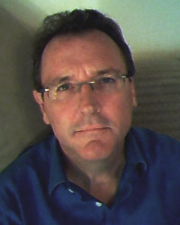 Do you really know what the role of an art director on a super-production like Prince Caspian is? That he’s at the core of the process, unifying the real and the live action world with the virtual, animated one? That he actually builds the whole world of the movie?
Do you really know what the role of an art director on a super-production like Prince Caspian is? That he’s at the core of the process, unifying the real and the live action world with the virtual, animated one? That he actually builds the whole world of the movie?
Well, if you didn’t know much about that, let us introduce you to Frank Walsh, one of Prince Caspian‘s art directors, and really a key person in the whole process. He spoke to us about the entire process, and also about the secrets of the making of the newest episode of The Chronicles of Narnia, where design, concept, architecture, building, setting, special effects and visual effects, just to name a few of them, all come together.
An alumnus of the Hornsey College of Art and the Royal College of Art in England, Mr Walsh made himself famous for his work on the Cleopatra TV movie (the Emmy-nominated 1999 version for Hallmark) and Elizabeth: The Golden Age (for Working Title in 2007, which received an Art Directors Guild of America Best Art Direction nomination). Recent films such as The Hitchhiker’s Guide to the Galaxy (for Disney/Spyglass in 2005) or, presently, Prince Caspian, allowed him to present all the versatility of his talent.
And that’s precisely the subject of our conversation today…
Animated Views: How and why did you come on Prince Caspian?
Frank Walsh: I was fortunate enough that my name was put forward to the producers by a very well respected English construction manager, whose recommendation resulted in my being invited to meet Roger Ford, the production designer, as he passed through London on his way to meetings in Prague. Following this very brief meeting, the following weekend I was asked to again to see him, for a second interview. During this he introduced me to Kerrie Brown, his set decorator, so I could describe to them the pros and cons about working in Eastern Europe. It was after that meeting I was offered the position and within days I was in Prague recruiting my Czech art department team.
My experience of the film industry stretches back over 25 years, and I have been fortunate to have worked with multinational crews many times, and in Prague twice before. Obviously, the Chronicles subject was well known to me from reading the books myself and to my children, and this was an opportunity not presented often. One which I desperately wanted to do, especially after meeting Roger, and seeing the scope of his vision. The added attraction was naturally working in New Zealand, with the crews there.
AV: How would you explain to role of an art director on a movie like this?
FW: Initially, my task is to assess the scale and complexity of the project. Working from the script, looking at concepts and discussing the scope of the film with the designer, I have to deduce a workable budget and schedule that fits into the producers’ scale of time and costs. This includes the cost and logistics of assembling the art department crew, the costs and crew makeup that should be anticipated for construction, on through to the set decorating and prop making costs. From that, I have to try and assemble the right team to achieve the demands of the design, budget and schedule. I select the art directors, draftsmen and other creatives, through to selecting a construction manager with the right crew and expertise to see the project through. Added to this are all the ancillary members of the creative team, scenic artists, greens men, prop makers, local technicians, etc, that go into making the project happen. I also advise the production on other crew members that will be needed, such as the Special effects department on this occasion, to try and make a homogeneous working team.
AV: What do you mean by “scope”?
FW: Initially it was only in conversation. After I was given the script to read, signed my secrecy clause in the contract, I was then permitted to see the amount of concept design development that had already been achieved. There were countless designs for the castle for instance, rejected or refined. A large model had been started, and the process was just at the threshold of having to be realised in concept form so they could progress. Roger is the type of designer who allows design to evolve, an approach that suited Andrew [Adamson, the director] too as he was very much involved in the total look. My arrival was timed at the point where the evolution had to be replaced with a more direct resolving of issues, to meet the deadlines set by the producers. That was great for me, though tricky emotionally and politically, to try and force issues with Roger and Andrew. However, that was the brief from the producers, and I had to try and deliver the sets on time, so a great deal of tact and discrete pressure had to be applied by me to drive this process along.
As far as being made to feel enthusiastic, there are not many chances to deal with a subject that goes from wartime London, via enchanted forests, mystical Castles, to a battle with a River God.
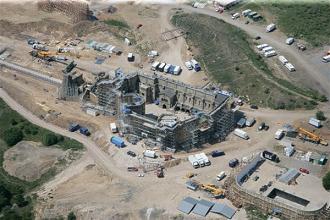
Arial view of the Castle courtyard.
Courtesy of Frank Walsh
AV: And, as for the script, what kind of elements did you take from it?
FW: The Castle for instance, whilst having to be the most fantastic castle ever, had to be designed as a logical place that suited the storyline. Pre-visualisation had been working for a long time on an abstract castle layout. My team had to then make sense of where each important component lay in geographical relationship to another. Miraz’s balcony, the landing strip for the kids, Edmund’s watch tower all had critical spatial relationships that had to be worked out. Again, though, the detailing was very much about reinforcing the idea about Miraz and his power over the people, so a simple reference to a Castle, had massive implications to the story telling visually.

Pile driving the concrete supports for the draw bridge with the castle skeleton in the background.
Courtesy of Frank Walsh
AV: To you, how does a good set take part in a story?
FW: The set is I believe, principally a ‘place’ for actors to perform in, it creates for them a ‘stage’ that helps them to become their characters. Naturally the set can also explain much to the audience about the story in subtle ways, but I feel that the set should be secondary to the performance. If the setting is so dominant that he attracts the eye more than the actor, then something is wrong with the acting is a truism I believe in, as the staging should always enhance the performance. The Great Hall in the Castle was an opportunity where the scale of Miraz’s dominance could be explained, and Roger used strong graphic forms, such as the carved Eagles holding the massive chandeliers, that gave a great sense of evil, almost fascist in presence. A very monochromatic color scheme further strengthened this feeling of power.

Building the Castle in the Prague Winter.
Courtesy of Frank Walsh
AV: For you as an art director, what were the challenges of this project?
FW: Working on opposite side of the world at the same time. NZ was a total 12 hour shift, so my art directors and crew over there were working when we slept and vice versa. Trying to organise, direct and support that situation was a challenge. At the time, the working day never seemed to end, as I switched from one team to the other.
Obviously the nature of the story and sets involved were a massive challenge. Narnia is a fantasy place, which we had to make real. A massive scale of set design and build was required. Ranging from recreating Cair Paravel as a ruin in an almost inaccessible part of New Zealand, building large Castle in depths of a Prague winter, to building a massive bridge over a raging river in Slovenia. And that was the easy part of the challenge.

Courtesy of Frank Walsh
AV: How did you share the task with the other art directors of the movie?
FW: I had to assess the overall project in its scope of work, the time frame allowed and the complexity of each task. From that I deduce the minimum number of crew I felt was required to achieve the project. In the end I actually had a relatively small crew, given the scale, time frame, and global spread of the film. With 2 senior art directors one for each hemisphere; supplemented by around 6 Art Directors looking after specific areas. For instance 2nd Unit, Visual Effects, and Locations all need dedicated art department crew to service their needs. During the course of the film, my task was to monitor each of the areas and adjust crew requirements to support the job in the most economical way, and ensuring the design concept was a fully delivered as we could achieve, on budget and schedule. And when necessary, trouble shoot issues before they got out of hand, and adapt the team as new requests came in.
Supporting the art directors we had a group of assistant art directors and draftsmen, who help deliver all the detail designs that a film required. On the other side I was also supporting the set decorating and prop making departments, to ensure that the whole design and shooting process ran as smoothly as possible.
AV: How did you choose the different art directors and creatives you hired: their portfolios, their styles, their medieval influences?
FW: Experience, temperament, commitment and above all enthusiasm. However, creating a team for me is not choosing just people I am comfortable working with, but what they bring to the team. Individual talent is important, but we are all there to support the designers and director’s vision. Sometimes I will interject individuals into the equation that appear superficially completely outside the natural choice, for what they might bring, and to give the subject a different edge. Even experience can be overlooked for someone who has great energy, commitment and drive. I just have to keep a watchful eye to make sure they do no overload themselves through their inexperience, but I am a firm believer in giving people new opportunities and challenges. Employing an expert on medieval castle architecture might have been a disaster, because we are not dealing here with historical fact, but a style of history that Roger and Andrew had perceived worked for Prince Caspian.
AV: How did you work with the team of illustrators of the movie?
FW: Broadly speaking. Illustrators fall into two camps, although their boundaries are often very blurred. You need the core group that deal in the broad strokes, the atmosphere of the film, hinting at the forms. These are important to imparting the general style of the film, and help with selling the overall concept, lighting style etc. Then there are the concepts that deal with more specific areas, of set design and prop making. Normally, this group are more important to me, as I have to be more focussed on tangible objects that need to be created, although the other group are equally critical to the intangibles of mood, color and overall style.
Much research into the overall look had been done before I joined, so a ‘house style’ had evolved. There were instances were I needed to help direct the further development, as the concepts were still very nebulous. The Stone Chamber, housing the Great Stone Table from the first film, with its iconic wall carvings depicting the Narnian heroes of old is an instance. I had to direct the research into the characters, and help form an assemblage of their images that suited the space that was dictated for the set (and the available stage space in Prague). Over many weeks this involved constant submissions to Roger Ford and Andrew Adamson of different drawing layouts that slowly distilled down. As this proceeded, I introduced our head sculptor, who fashioned maquettes of the panels so a three dimensional concept could be developed alongside. So Andrew Adamson and Roger Ford were presented with 2D and 3D presentations to help them resolve this crucial image. At the same time, I had to integrate the staging of the scene, lighting and special effects criteria, so that the entire set formed a complete solution to the script challenge. A unique challenge on this particular element was that the design work was being undertaken in Prague, whilst Andrew Adamson and Roger Ford were in New Zealand. A slightly logistical headache for me in getting decisions made, but one that had to be overcome to ensure we progressed with the set building schedule.
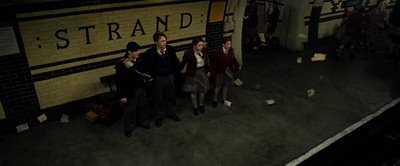
AV: How long were you retained on the film, from pre-production to shooting locations?
FW: Initially I was flown to Los Angeles, where Roger and the concept artists, pre-visualisation, Visual Effects and other key crew were based. Here I met with the director, and could sit in on the video conference calls with WETA in NZ as specific design decisions were being made by Andrew and Roger. A valuable time in assessing the people I was working for, and something I am grateful that production had the foresight to encourage. I also had a chance to work directly with my NZ art director, and help formulate his budget and his department requirements.
After a period in LA, I went with Andrew, Roger and the production team to NZ to recce the locations and develop the strategy of how Europe would integrate with work going on in the Southern Hemisphre. NZ was a fantastic experience, not only in the stunning locations, seen often from helicopters, but to the fantastic people I met and worked with. After this I traveled back to Europe where I had to quickly put in places design teams in Prague and also Slovenia, and to a lesser extent Poland. Recces with Andrew, et al, soon followed which identified the main areas we would work in.
AV: How did you work with Roger Ford?
FW: All the designers I have worked with, have approached their task in very different ways. The critical thing for me was to as quickly as possible to find the way the Roger felt most comfortable with. My choice of art directors was critical, to ensure I assemble a close team of creatives that he would be relaxed and confident with. The design process was going to be a gradual process of refinement in consultation with the director, whilst still keeping to the pressured schedule set by the producers. A question of balancing each against the other, both having to be satisfied to achieve the brief and keep the producers happy. In the end it was for me a very rewarding experience, as I think we did deliver some great sets, fulfilling both concept and budget stipulations, in some very difficult situations and locales.

AV: What kind of material did you get from him.
FW: Sketches and conversations. And listening to Roger and Andrew discuss designs being made by WETA in New Zeland for the armor and so forth, helped me focus on their design philosophy. There was also a wealth of research completed and undertaken during the project to build the designs on. It was also crucial that I formed a good relationship with crew from the previous film, who helped fill in the blanks in my knowledge, about how the thought process worked. The set decorator, Kerrie, was fantastic is explaining subtle nuisance that occurred in very relaxed conversations, that helped me better understand how Roger and Andrew saw the world of Narnia, and what were critical elements to them.
Knowing this information was crucial, as at this time, I was also trying to cost the project, not only for the art department crew I needed, but also costs for construction, set decoration, props, and greenery. Costs that had to apply to creating sets in New Zealand, Czech Republic, Poland and Slovenia. And based on some very early ideas even at that stage.
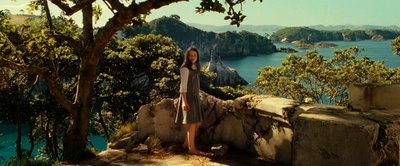
AV: How did you work with Andrew Adamson?
FW: Luckily, Roger the designer had a great report with Andrew, so the process of design development was fairly clearly marked out. However, it was important for me to be able to operate, with the designers support, in an area where I could observe Andrew’s thought process involved in realising his vision. Luckily, the initial time on the project in Los Angeles and New Zealand helped I think, to build a trust and report. This allowed me an understanding of what issues were important to him, and what he might be more flexible with. It is critical to achieve this understanding and trust, as often there are instances where seemingly innocuous requests are critical to the story, and have to be embraced, whereas often other apparently bigger problems if approached properly, are quickly resolved without any loss to the final film.
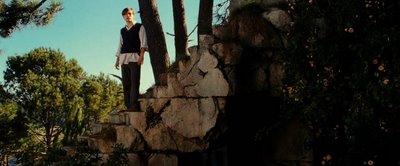
AV: Did you work on one sequence in particular?
FW: Sadly, I never get an opportunity to work on any one specific sequence. My task is to facilitate a group of talented individuals, who problem solve under my watchful gaze. I try and encourage them to work with the designer in the most fluid way to achieve the vision, and only operate to bring their enthusiasm and commitment within achievable bounds in both financial and time restrictions. I naturally operate as a sounding board in situations where a more disengaged observation can often help identify and provide a solution to a problem. This extends not only to the design process but also the construction and even the production issues. I work closely with the 1st assistant director for instance, helping him formulate a workable schedule for filming, that encompasses many departments. I act as a catalyst between departments, be it Production, Location, Construction, Visual Effects or Special Effects to ensure that an integrated approach to problem solving is achieved.
AV: Prince Caspian takes place 1300 years after the first movie. Did you take that aspect into account?
FW: Certain aspects of the earlier film had to be revisited for story points, but as you point out, were seen after 1300 years of evolution. So careful and considered destruction and aging was imperative, and were very much handled by my New Zealand crew, who luckily had been involved first time around. The second film involved much more set building than the first, which explored more the stunning landscape of New Zealand. The style of the new architecture was very much mapped out by Andrew and Roger before I started, so the art department were able to start immediately to develop their points of reference and make it real. What was interesting was exploring environments that were only hinted about before, and make these real places. The Stone Table for instance, was now seen inside a rock cave, deep inside a mountain, the Narnians having turned it into a symbolic shrine.
What was critical from the last film for me, was working with crew from that production, who were steeped in the personalities, and more important, philosophy of the subject. Thereby helping me get a valuable insight into the background of the production very early on.
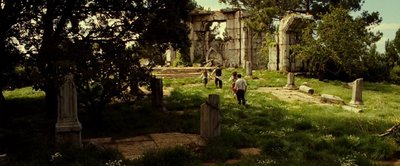
AV: What is the philosophy of the subject? How is it expressed in your work?
FW: It is understanding how the director ‘sees’ the film. Is it a literal interpretation of the story, or something else? When dealing with classic stories (Narnia, Lord of the Rings, Golden Compass, etc) you bring preconceptions to the story, based on your own imaginative response to the book. You have to see the story from the director’s perspective. Even on new scripts, when you read it through, you formulate a response that is personal, and whilst I encourage my team to contribute their ideas, it still has to be at the expense of a higher order. At its most rewarding, it’s a liberal dictatorship, where the best ideas are embraced and integrated.
AV: What are the most ambitious things you’ve done on Prince Caspian?
FW: Building Miraz’s Castle in the depths of winter, where the temperature can drop to minus 20C in Prague. Heavy rain added to the problems as the entire building site turned to ankle deep mud [as seen in the photos at the beginning of this interview]. Building a rough wooden bridge across a wide glacier fueled river in Slovenia, and respecting the ecological needs of the locale, but strong enough to carry charging cavalry. Building required rerouting the river temporarily [as in the photos below]. Adding a plaster cliff side with trees and foliage to a vertical chasm in Poland, again in the area of a protected national monument, so no lasting damage was allowed. Building a London Underground Station with a ‘working’ train, in basically a warehouse in New Zealand. Keeping fields of grass looking fresh for weeks and weeks during a hot summer, as endless cavalry charges chewed the ground to pieces. Creating a pit in the middle of a field, 60mtrs x 20mtrs x 5mtrs deep in the Czech Republic requiring the removal of hundreds of tons of rock, without leaving a mark of how the pit was dug out, and regressing the bottom in the hottest part of the summer. The whole lot having to be returned to normal after filming. Importing over 18,000 individual plants into a wood in the Czech Republic, and keeping them alive for weeks, to create a fern forest. I could go on…
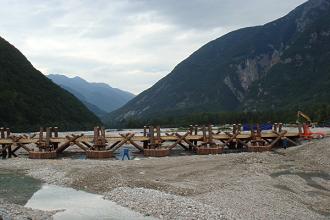
“Rerouting the river so we could build the Bridge in Slovenia”.
Courtesy of Frank Walsh.
AV: How do you integrate visual effects in actual sets?
FW: Due to Andrew’s background in animation, pre-visualisation is a very important tool for him. Many directors do not pay much heed to it, but it was very useful for everyone on this because of the complex integration of the different departments. Design, VFX, SFX, Costume and Stunts would often all be involved in a sequence, so knowing essentially how Andrew wanted a scene to work helped us all integrate efficiently.
However, the work was started long before the art department began to define the staging, so the process started as a separated creative force, which is not the way I would normally have had it happen. On The Hitchhiker’s Guide to the Galaxy for instance, I ensured that the pre-visualisation was developed within the art department as a fully integral operation. This avoids situations that I found in Narnia, where animatics were created which were unrealistic in achieving in real terms. Miraz’s balcony for instance was conceived much higher in the Castle than we eventually built it. This was because when Andrew actually stood on a full size mock up of the set that I had made to prove the point, it was apparent to him that the pre-viz had distorted what he really wanted to achieve when he talked about the shot. It was also outside the practical boundaries of what we could have built as an integral set piece, which Andrew wanted us to achieve, so that a real proximity between the actors could be created to help their performances, so down it came in height. It was interesting to see things that work in an animation, often struggle when dealing with physical spatial constraints. This is why the set designers are important components in this work because of their understanding of working in actual 3D spaces rather than pure virtual worlds.

Courtesy of Frank Walsh
AV: How did you work with visual effects people?
FW: Integration of VFX and built elements is the real fun of film making I think. The very first films all employed visual tricks to heighten their effects, so they always been ‘part of the kit’, so to speak. I was fortunately enough to have started my career before computers where readily available to work out so many of the problems, certainly within the art department. The cost of VFX is still however a serious problem, so on Caspian we built probably more than many people will realise to avoid for ‘top ups’ and so forth. The Castle, and the Mountain over the Stone Table are prime examples where although it was going to be filled with CGI creatures, the production requested we build as high as possible to avoid unnecessary CGI extensions, as although relatively easy, better to spend the money on the characters in foreground.
Due to the ease of access to software now, much of the pre-viz and VFX development work can actually be undertaken by the set designers in the art department, which I actively encourage. An instance is the Trebuchets in the battle. Andrew had an idea of what he wanted, that was loosely indicated in the pre-viz. One of my art directors then took this rough, and then using AutoCAD and Vectorworks, designed and animated a working solution to the brief set by Andrew, for a rapid firing weapon. This was then a real object that could be constructed, and to some extent made to work by SFX. In the final film, VFX added the finesse to the working mechanism that would have been to difficult and expensive to achieve for real.
On Caspian we had the benefits of some of the most talented FX people in the business, and the most pleasant to work alongside. We could share each others problems and mutually agree what was the best solution to any situation in a collective way. Again, unusually it was a department that was set up before I joined the project, so I had to run to catch up in the thought process, and ensure any solutions made the best use of the overall budget. I appointed a dedicated art director to their department, to ensure that design development was conveyed instantly to VFX for their input. As we were dealing with miniatures and CGI, it was important that the art department maintained a careful design control over how the additions were developed and integrated. Eventually I added another art director to this department, when WETA in New Zealand won the bid to build the Castle model, as logistically it was impossible to run that operation from Europe without my eyes and ears on the ground. There followed many lengthy live video conference calls and such to iron out the natural problems that occur on a day to day basis, so working days never seemed to end for many in the art department on opposite sides of the world.

Courtesy of Frank Walsh
AV: And with special effects people?
FW: I was fortunate that all the shortlisted candidates for this position I had worked with before. So when the position was filled, I had a very good idea of their strengths, weaknesses and thought processes, as they probably did of me. SFX like VFX are a department that the art department need a close affinity with, and easy lines of communication. To achieve this, each of the sets that had heavy SFX involvement, was looked after by a dedicated member of my team, so there was always a knowledgeable individual to trouble shoot their problems. This was critical, as by nature their physical interaction, had a direct effect on the set building process. From ensuring that the real swinging arm of the Trebuchet would create a believable arc for the CGI enhancement, to making sure that the texture of the ice that trapped the White Witch could be reproduced as a breakaway, had to be solved by the art department, and then conveyed to them for implementation.
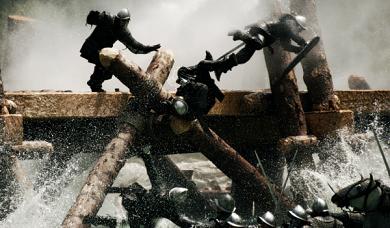
Courtesy of Frank Walsh
AV: How do you decide what’s going to be real and what’s going to be CG? And how do you integrate/anticipate these parameters into the sets you build?
FW: Some options are obvious; where something does not exist and cannot be physically built, the upper levels of the Castle as a composite in this instance. Others can be the restriction on a location, turning a street in Prague into wartime London; adding bombed out buildings, barrage balloons, through to Nelson Column, whilst removing aspects of Czech architecture that would prove distracting. What can be physically built also dictates what is real and what is virtual. The Trebuchets were a very complex mechanism, the cost to make for real was too prohibitive, as was the the effect Andrew anted to achieve in their firing. Decisions are normally taken in consultation with the producer, director and relevant departments to deduce the best solution. In Caspian, there were actually no instances where there was not a need to build something for the shot, from the Gryphon attack, which had the claws of the creature physically there, to a tilting bridge section so that the real horses could be placed onto the bridge as it was being destroyed.
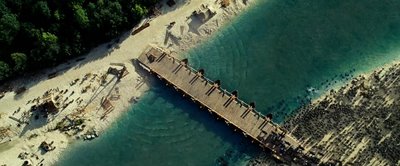
AV: Some big productions, like the new Star Wars films, used very few real sets. Almost all were CG. Why does something like Prince Caspian find a need for so many real sets, with all the extra complexity and sometimes tough building conditions?
FW: As yet, sets still give a different quality to the look and I believe the acting in a film. Where one was dealing with numerous scenes that did not require CGI, then it made sense to construct these elements. Building sets is by and large still a cheaper option, and allows for more flexibility for changes during shooting.
AV: Can you share with us the process of building of one of your sets?
FW: The Bridge….this might be a lengthy story…let’s keep it for another time!
AV: The question of the integration of animation in live-action seems, to me, critical in present-day commercial cinema.
FW: Importantly, I think those outside the industry should be aware how integrated animation is into the area of set design. Technically, most of my critical crew members can and will produce animatics and 3D manipulative visuals to explore and define the design process. We use it as another tool in the box, and without an understanding, the job of set creation would be more difficult. And certainly when working with directors such as Andrew, it is important to find a medium to communicate ideas that they are comfortable with.

AV: What aspect of the production of did you prefer on Prince Caspian?
FW: Working across the two hemispheres of the world, I assembled and managed a great team of creatives and constructors. Drawn from over a dozen different nationalities, experienced film makers to complete novices, I brought together a group of individuals forming them into a team, and directing them to realising a great vision.
Movie Companion is available to buy now from Amazon.com
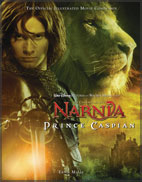
With all our gratitude to Frank Walsh for his generosity, time and kind help, and to Tim Sovay. Set photos by the artist. All material ©Disney/Walden Media. All rights reserved.



